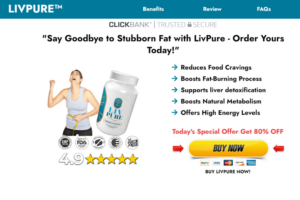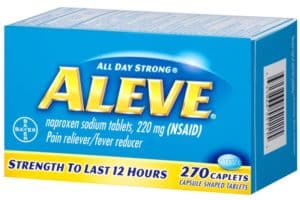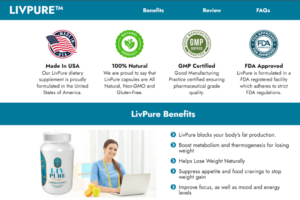It’s common to confuse boiled water with distilled water. Are they the same? Is boiled water the same as distilled water?
Boiled water is not the same as distilled water. Distilled water is water that’s been purified of minerals and salts. It underwent boiling, so it turned into steam and then cooled to become water again. This type of water is usually used in steam irons and car batteries.
The key differences between boiled water and distilled water are as follows:
- Distilled water is not recommended for drinking
- Boiled water has a lower boiling point
- Distillation is a longer process
- Distilled water is flavorless
Read on to learn more about distilled water vs boiled water and how they are different.
Is Boiled Water the Same as Distilled Water?
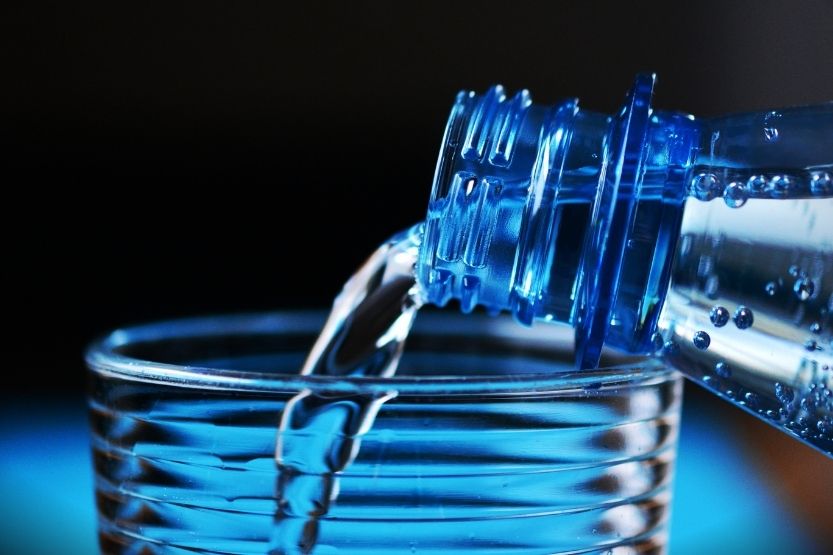
Distilled water refers to the water that has undergone purification. Thus, it does not contain minerals and salts.
Part of the distilling process is boiling, where the water turns into steam then becomes liquid water again. This type of water is usually used in steam irons and car batteries.
Both boiled water and distilled water undergo the process of boiling. However, that doesn’t mean they’re completely the same. Let’s talk about what makes these two different from each other.
Boiled water is not purified water.
Simply put, boiled water is ordinary water that has reached its boiling point (100ºC or 212ºF).
Boiling water usually kills or inactivates potentially harmful bacteria, viruses, and other pathogens, but it doesn’t remove minerals and impurities (e.g., toxic chemicals). Therefore, it’s not considered purified.
On the other hand, distilled water is a type of purified water free from chemicals and contaminants, such as algae, bacteria, fungi, metals (e.g., lead), parasites, and other chemicals.
See below for the key differences between boiled water and distilled water.
1. Distilled Water Is Not Recommended for Drinking
Another difference between the two types of water is their mineral content. Boiled water doesn’t lose minerals, such as calcium, magnesium, potassium, sodium bicarbonate, iron, and zinc.
Distilled Water Does Not Contain Minerals
Minerals are important because they use them to perform different functions, from building strong bones to promoting blood circulation.
Is distilled water the same as boiled water? Distilled is different from boiled water in terms of mineral content. Because of the purification process (distillation), distilled water is stripped off of minerals.
That’s why it’s generally not the best choice for drinking water, especially if your daily diet can’t supply these essential minerals.
If you drink distilled water, there’s a possibility that it could draw out small amounts of minerals from your body to maintain a balance.
Should You Completely Avoid Drinking Distilled Water?
To be clear, it isn’t completely unhealthy or toxic. It probably won’t hurt to drink it in moderate amounts, except when you’re sick, doing high-intensity exercises, or malnourished.
2. Boiled Water Has a Lower Boiling Point
Distilled water vs boiled water – which has a lower boiling point? Distilled water is a type of purified water that depends on evaporation to eliminate some inorganic minerals (which humans can’t use), metals, and other contaminants.
Generally, these unwanted elements need to be boiled at a temperature higher than 212ºF (water’s boiling point) to remove them.
After it’s collected and cooled, the resulting wet steam is what’s called distilled water. However, some impurities (e.g., benzene and chlorine) remain in the distilled water because they have a low boiling point.
That’s why distilled water might have to undergo additional purification processes to filter them out.
3. Distillation Is a Longer Process
Boiling water might take around 5 to 10 minutes, but different factors could affect the boiling time of water:
- Temperature
- Air pressure
- Vapor pressure
Even the type of kitchen appliance you use to heat water plays a significant role. So, for example, you’re going to boil around 34 ounces (oz) of tap water in a pot (with the lid on) on your gas range stove. It may take 8 minutes minimum for the water to boil.
Boiled water vs. distilled water-which takes longer? Distilling water is a more time-consuming and expensive process. If you’re using a countertop water distiller, it takes around 4 to 7 hours to produce 1.6 gallons (approximately 25.6 cups) of distilled water.
4. Distilled Water Is Flavorless
The “flavor” of water depends on the supply source and your taste perception. More than 50% of Americans get their drinking water from groundwater, such as water from a well, which could have a metallic taste.
To make this raw water safe to drink, it undergoes several treatment processes before it comes to your home. This treated water is packed with minerals and disinfectants, which give its taste. For instance, magnesium can make water taste a bit bitter.
Boiling water doesn’t really change the taste of raw water since it only kills potentially harmful microorganisms. On the other hand, distilled water often tastes flat because it has been stripped of everything, including the minerals that give water taste.
How Often Should You Urinate After Drinking Water
How to Distill Water at Home for Free?
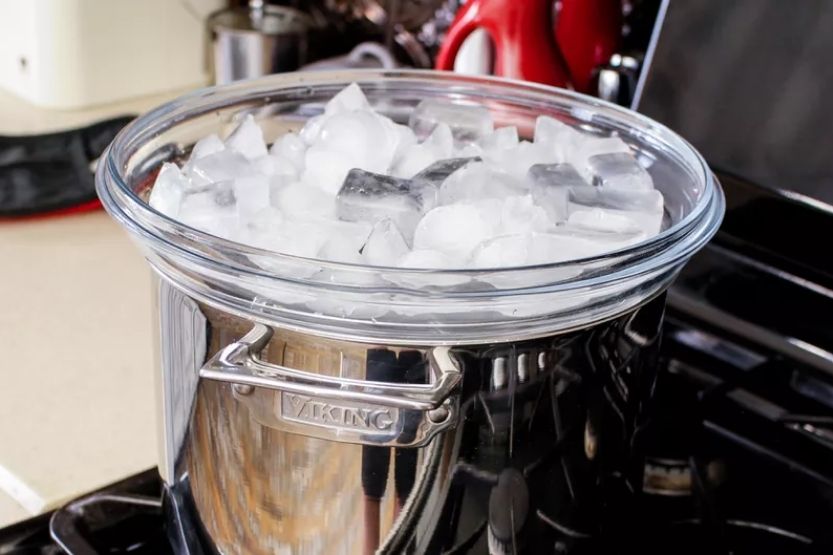
Distillation is a time-consuming and expensive process. That’s one of the major reasons why many water bottlers avoid using distillation.
The same thing can be said about making distilled water at home. Just think about this for a second. You’ll have to spend at least 10 hours or more to produce a gallon of distilled water.
You might already have some of the materials you need to make it in your kitchen, but that doesn’t mean you won’t spend a dime. You also have to think about the cost of, let’s say, the source of heat (e.g., fuel).
Overall, it’s cheaper and more convenient to buy distilled water than to make it yourself. But in case you don’t have access to it right now, I’ve outlined the steps for you below.
Things You’ll Need:
- One large cooking pot with a lid – For instance, you can get a 5-gallon stockpot that’s made of stainless steel (suitable for safely boiling water);
- A smaller stockpot or any metal container that can float inside the larger stockpot;
- Ice cubes – They make the distillation process much faster; and
- Oven mitts
Steps
- Place your large stockpot over a stovetop burner, grill, or campfire, and then partly fill it with tap water;
- Inside the larger stockpot, place the smaller stockpot or any aluminum or stainless steel container that can float or stay above the water level. This will serve as your collection container for the water vapor when it turns back into a liquid;
- Put the large lid on the larger stockpot. Ensure the lid is turned upside down, so the condensed water will drip into the middle and the smaller stockpot;
- Put the burner on medium-high heat (around 180ºF to 200ºF). The heat should maintain a constant simmer;
- Load the top part of the upside-down lid with ice cubes. The ice cubes will help cool down the water vapor and change it back into liquid faster; and
- Wait for 45 to 60 minutes to make around 1.25 ounces (less than a cup) of distilled water. Don’t forget to load a new batch of ice cubes, as well as water, every 30 minutes for 1 hour to avoid heating your cookware while dry. That could damage it over time.
Important:
Wear your oven mitts to avoid getting your hands burned when touching the lid or throwing away the melted ice.
This is just one way of distilling water. Feel free to find other methods and experiments.
Some people place the collection container outside the cooking pot to avoid contaminating the source water. One way to do that is to use a glass funnel instead of a cooking pot’s lid. It’s connected to a bottle or glass flask, which will collect the purified water by plastic or copper tubing.
Make sure you position the funnel over the boiling water and above the collection container. This is to ensure the distilled water would flow properly, with the help of gravity.
Again, distilled water vs boiled water – Is boiled water the same as distilled water? Distilled water does not contain minerals and salts compared to boiled water. Distilled water, as the name implies, underwent distillation. Usually, distilled water is used for steam irons and car batteries.
Can You Make Distilled Water with a Kettle?
Remember: Distillation involves separating water from its organic materials (e.g., minerals) and other impurities by heating it until the boiling point. When the steam reaches the cooler surface, it condenses and becomes water droplets. The water droplets are potentially distilled water.
So, the short answer is a possible yes. However, you’re going to need more than an ordinary tea kettle to make distilled water at home. One of the important tools you need is a condenser.
You have several options for a condenser, including a 1/4-inch copper tubing, heat-resistant plastic tubing, and air hose. But if you’re willing to spend on a lab-grade condenser, try a Liebig condenser or straight condenser.
Could you still make distilled water using a tea kettle, even without any of those materials?
Steps
- Fill your tea kettle with tap water. Make sure it’s only half full or less than half full. If you fill it to the brim, some of the unwanted organic materials of water might make it to the distillate;
- Heat your kettle for 8 to 10 minutes, or until the water starts to boil and steam is created. Make sure the temperature of the water vapor stays within 175ºF to 195ºF, and then turn off your heat source when the temperature reaches 212ºF;
- Remove the lid, and then place a heat-resistant bowl over the opening at the top of the kettle; and
- Remove the bowl after a few minutes and quickly put back the kettle’s lid. The steam collected in the bowl will change back to its liquid form, which will be your distilled water.
This might sound simple, but it’s not foolproof. There are many things you need to consider when distilling water. If you’re dead serious about making homemade distilled water, a home distillation kit might be a more convenient and cost-effective option than a tea kettle.
How Do You Boil Water Properly?
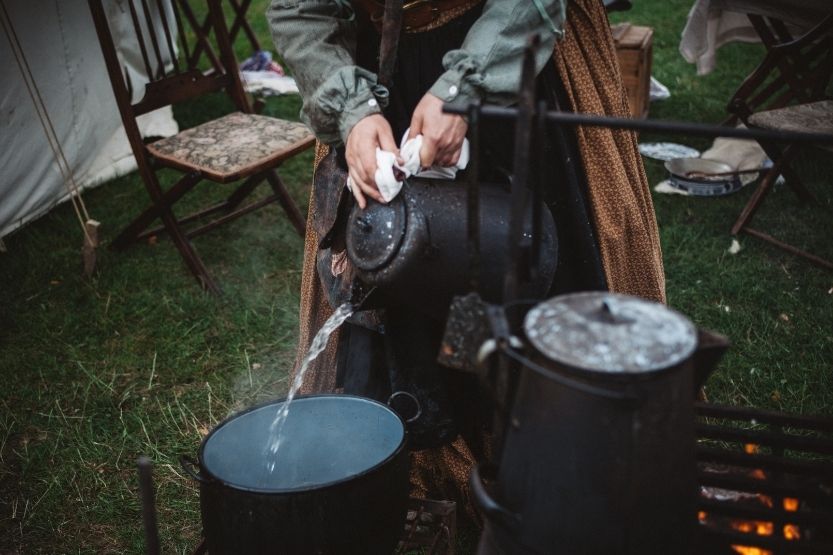
Boiling seems simple. It’s so simple that it’s hardly worth explaining. However, there are a few things that you need to think about to make this process more efficient.
1. Don’t Add Salt
Unless it’s needed for what you’re cooking, avoid adding salt to boiling water. Some people believe that doing this would make the water boil faster. There might be some truth to this old wives’ tale, but it wouldn’t really make so much of a difference.
In fact, it might do the opposite. Adding salt could cause water to boil longer because it raises the boiling point. Why does that happen? That’s because water molecules find it harder to turn into steam and enter the gas phase.
2. To Reboil or Not to Reboil Water
Generally, it’s safe to reboil water around once or twice. However, as much as possible, don’t do it often.
What could possibly go wrong if you boil water again?
Water that comes from a clean source may not present much of a health risk if you reboil it. It’s another story when it comes to the water that comes from a well.
Water found underground might contain toxic compounds, such as arsenic and nitrates, which become more concentrated every time you reboil the water.
3. Follow the Minimum Boiling Time
Oftentimes, people think large bubbles are indications that the water is already sufficiently boiled. That’s not always the case, though. The only way to accurately measure the temperature of boiled water is by using a thermometer.
Most health organizations suggest boiling water for a minimum of one to three minutes.
So, Here’s What You Can Do:
- Dip a digital meat thermometer into the boiling water once bubbles or steam starts to form;
- Make sure the stem of the thermometer doesn’t touch the sides or bottom of your cooking pot; and
- The thermometer should read 212°F.
How Long Does It Take for Ice to Freeze
Conclusion – Distilled Water vs Boiled Water
The bottom line is that distilled water and boiled water aren’t interchangeable, although they both undergo boiling. In general, boiled water is good enough to drink and doesn’t require sterile water for other purposes.
But if you need your water to be totally free from minerals, germs, and other impurities, distilled water is the best way to go—that is, if you don’t mind the bland taste.
A simple way to remineralize it is to add sea salt, which has trace elements of minerals found in tap water (e.g., potassium, magnesium, and calcium).
Again, here are the main differences between distilled and boiled water:
- Distilled water is not recommended for drinking
- Boiled water has a lower boiling point
- Distillation is a longer process
- Distilled water is flavorless
Related reading:
How Long Does It Take for Water to Boil?
Can You Drink Ocean Water If You Boil It?
How Long Does It Take to Pee After Drinking Water?

